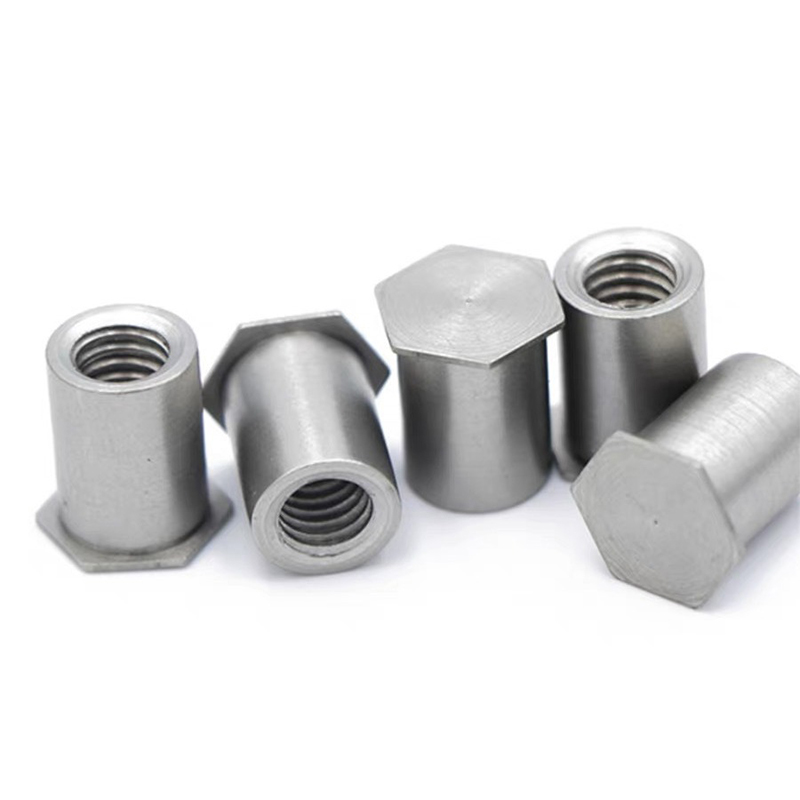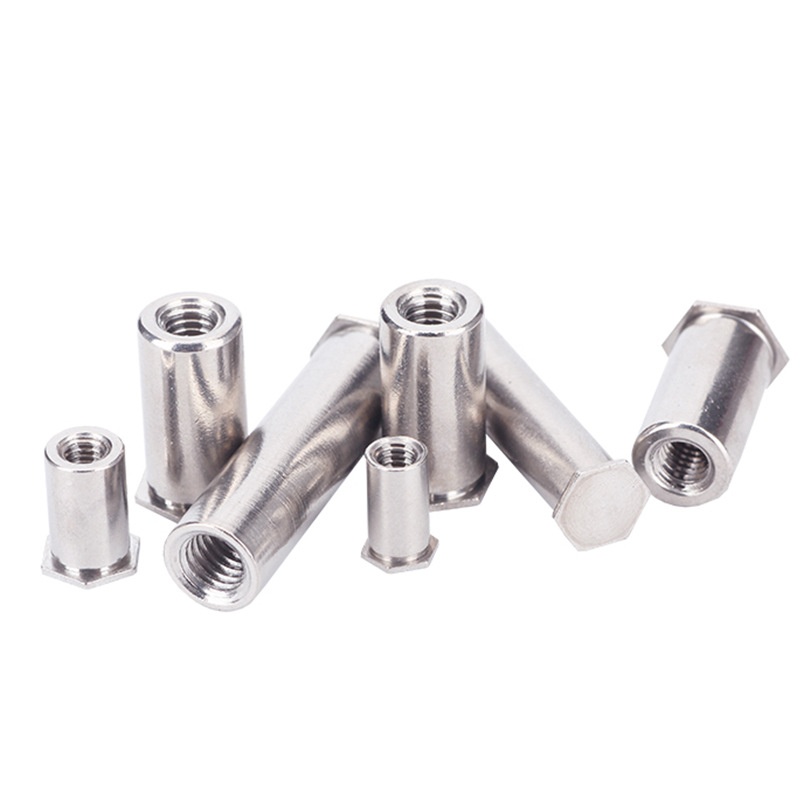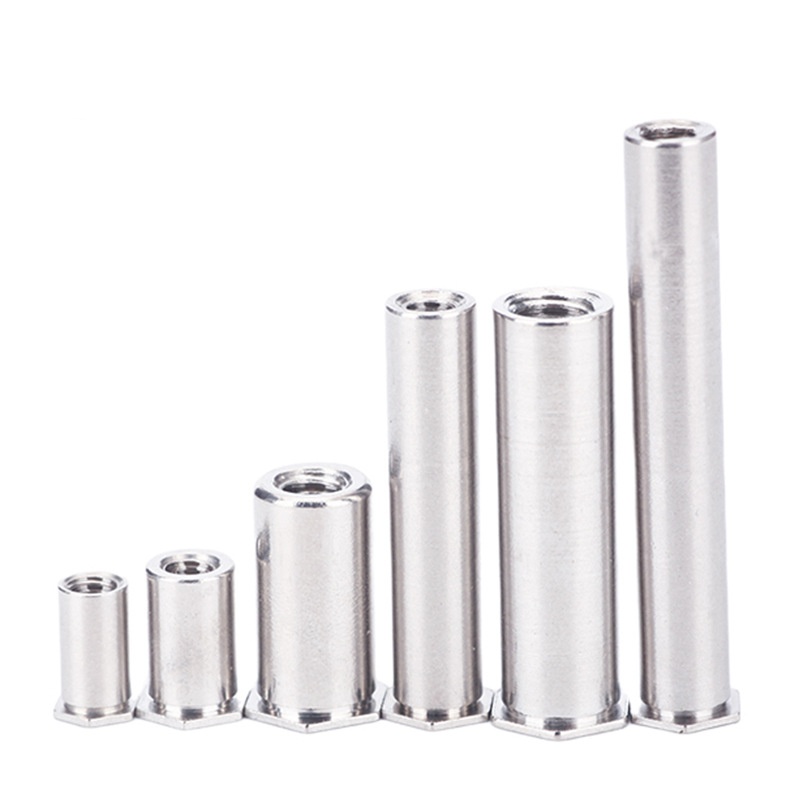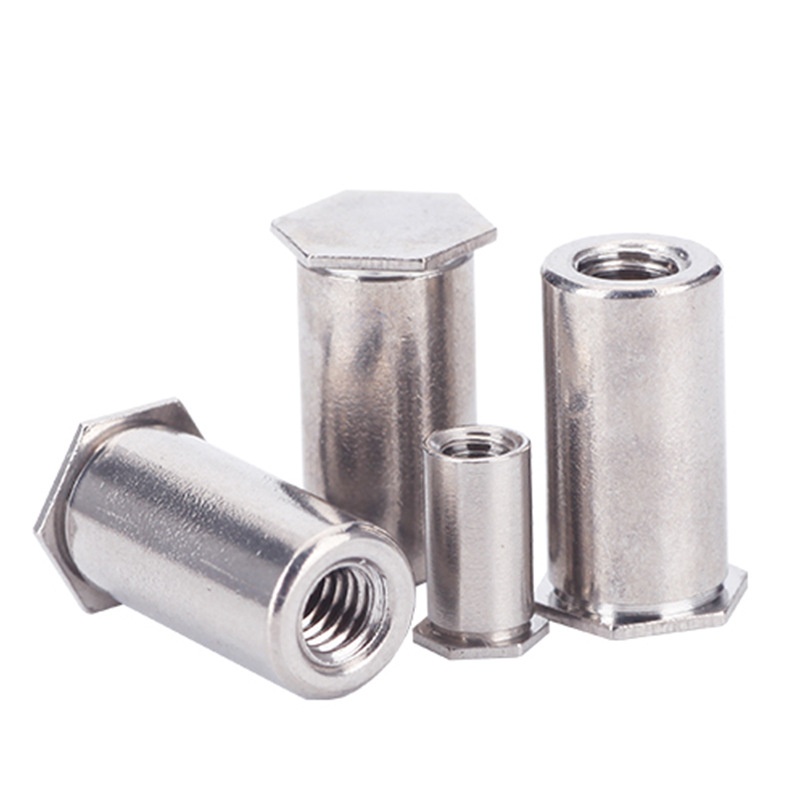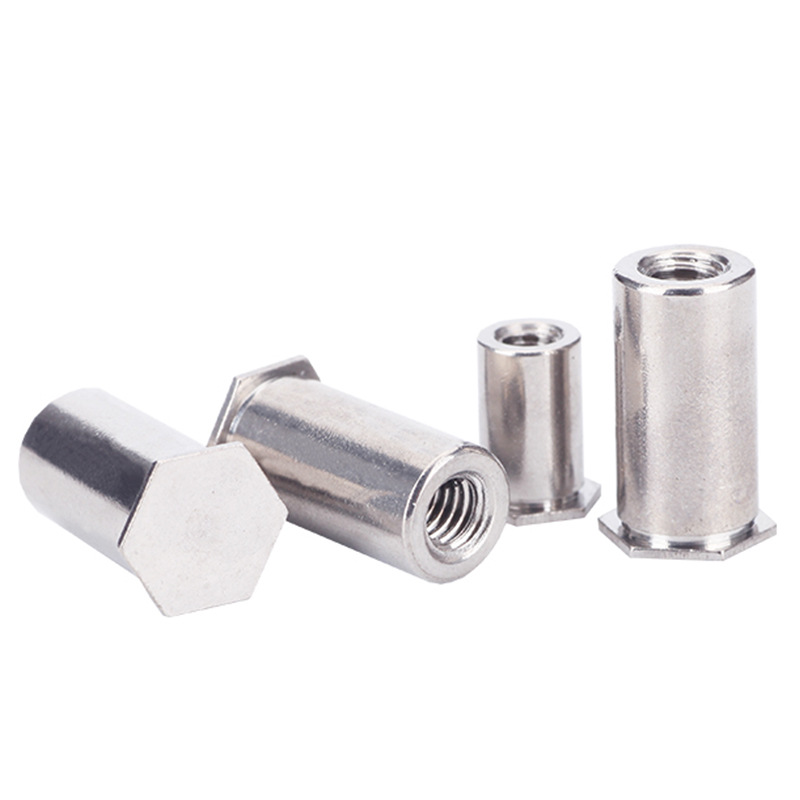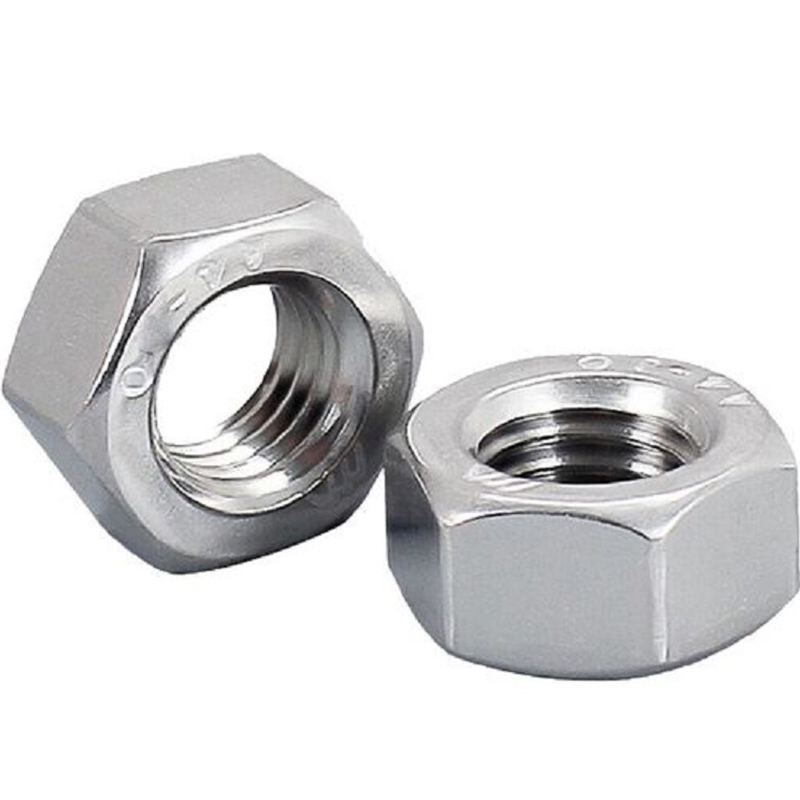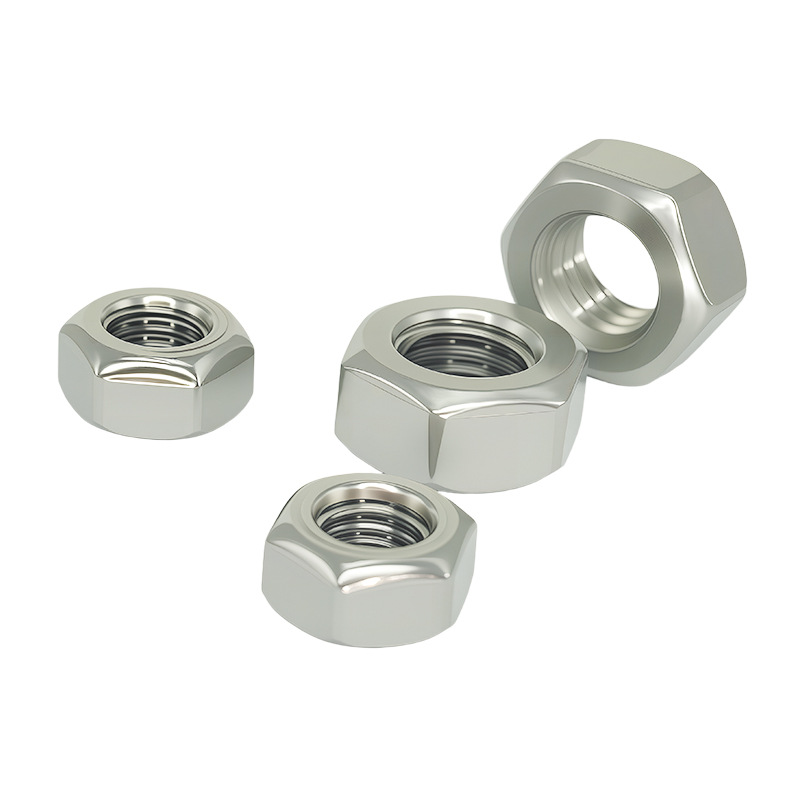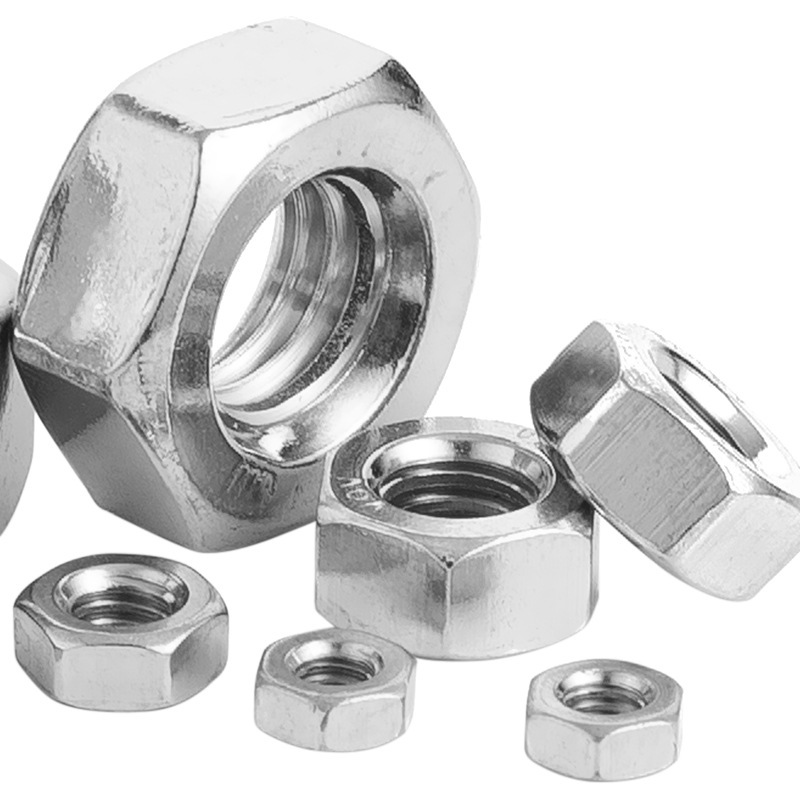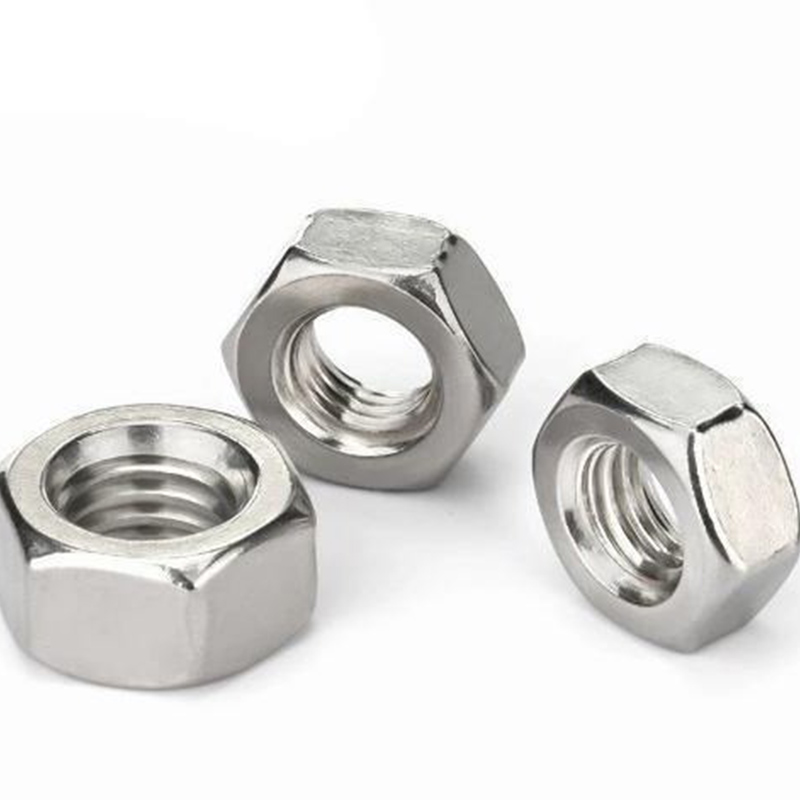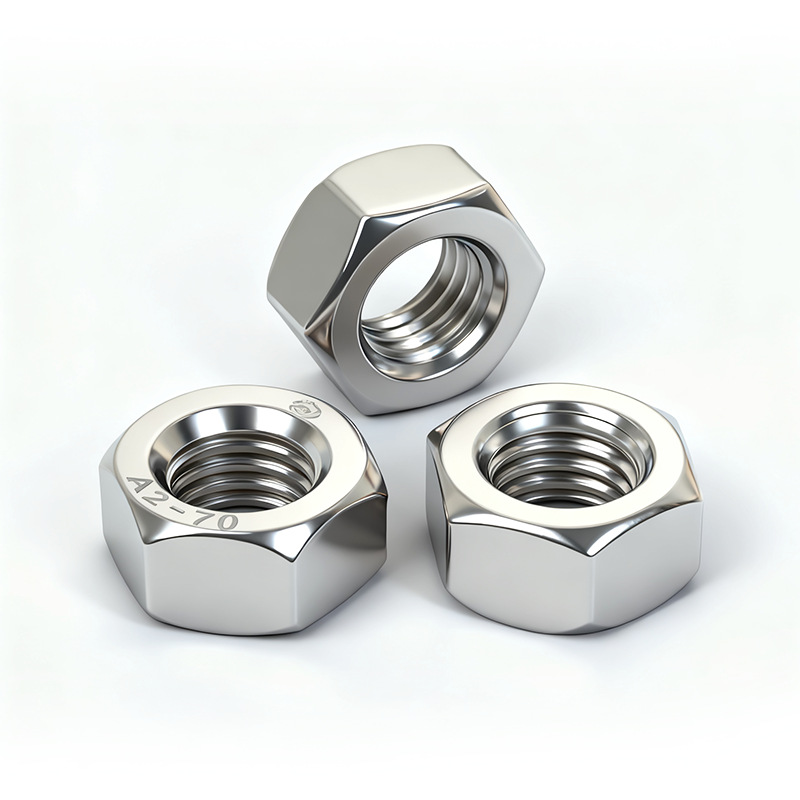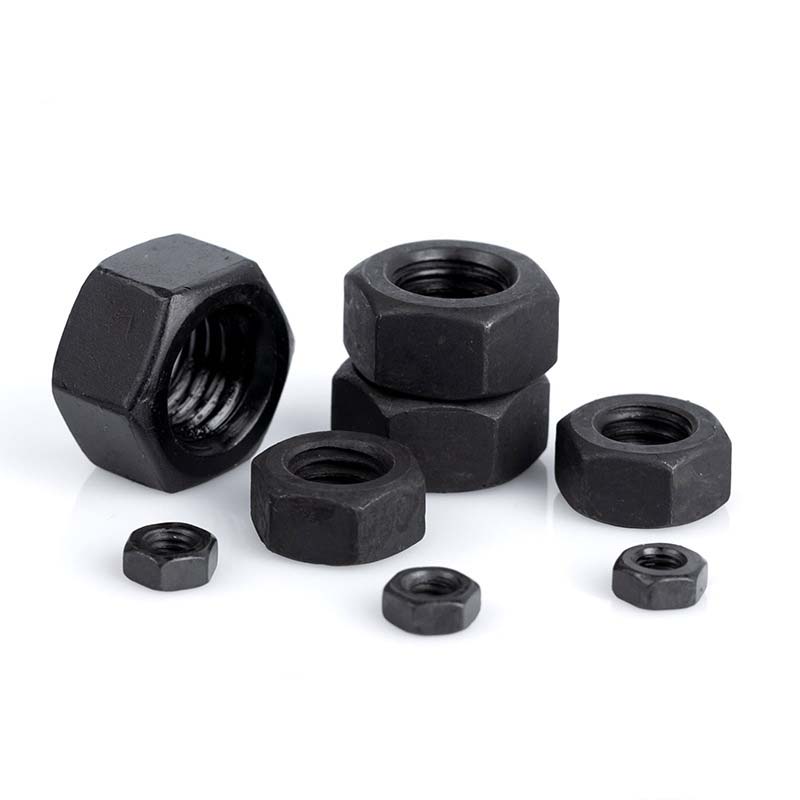Blind hole flat head hexagon riveted nut-Carbon steel
Send Inquiry
Blind hole flat head hexagon riveted nut-Carbon steel already get natural rust resistance from the material, but they often get surface treatments too. Passivation is the most common one for these nuts,it makes the chromium oxide protective layer stronger, boosts corrosion resistance, and gets rid of free iron bits that could cause problems.For specific needs, you can add other finishes. Electroplating (like zinc-nickel, though that’s less common on stainless steel) or special coatings can give extra chemical resistance or a specific look. These treatments work with the base material to make the nuts even more suitable for different uses.
| Mon | M3 | 3.5M3 | M3.5 | M4 | M5 |
| P | 0.5 | 0.5 | 0.6 | 0.7 | 0.8 |
| d1 |
M3 |
3.5M3 |
M3.5 |
M4 |
M5 |
| ds max | 4.2 | 5.39 | 5.39 | 7.12 | 7.12 |
| ds min | 4.07 | 5.26 | 5.26 | 6.99 | 6.99 |
| s | 4.8 | 6.4 | 6.4 | 7.9 | 7.9 |
Strict quality control:
Blind hole flat head hexagon riveted nut-Carbon steel are made to strict size standards like ASME B18.7 or DIN 7337, so they can be swapped out easily. Main dimensions include the thread size (like M3 to M12), head diameter and angle (usually a 90° countersink), hexagon width (AF measurement), and the grip range (how thick the material can be). These riveted nuts come in both metric and imperial thread types. Important specs also cover the blind hole depth and the rivet barrel’s size.
Application:
The Blind hole flat head hexagon riveted nut-Carbon steel is a solid pick when you need a smooth surface and threads that hold up in thin stuff. The flat head sits flush with the surface, and the hex shape stops it spinning when you tighten down a bolt.
You'll often see this blind threaded standoff used in sheet metal jobs,like enclosures, panels, or chassis. It's also common in trucks, HVAC gear, or places where rust could be a problem (though carbon steel usually needs plating for that). Big plus: it works great where you can only get to one side, giving you solid threads without needing to reach the back.


